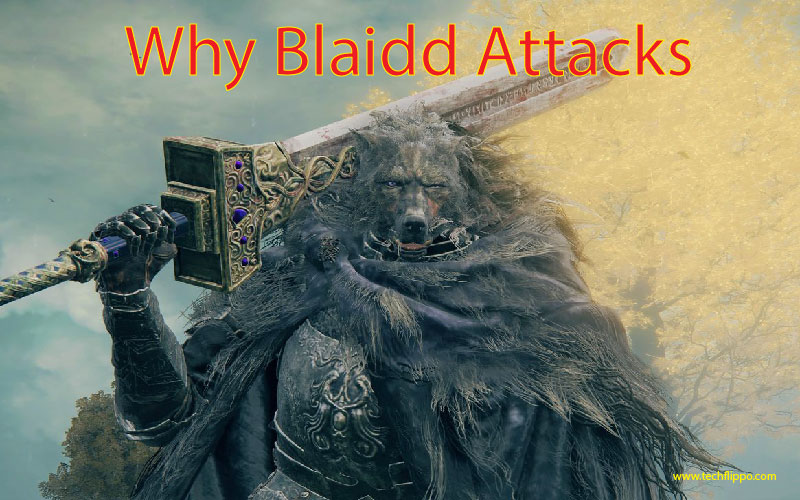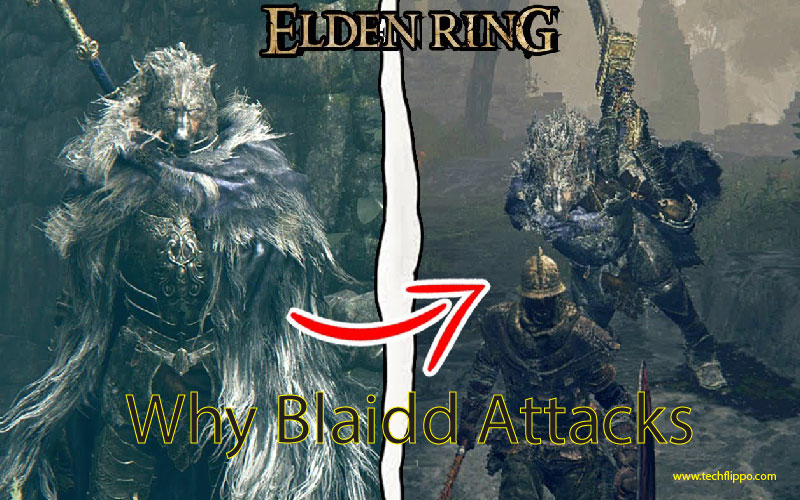Why Blaidd Attacks You?
If you’ve ever encountered Blaidd, you might have felt a mix of excitement and unease. This intriguing character has captured the attention of many with his enigmatic presence and complex behavior. But what happens when that charm turns into aggression? Understanding why Blaidd attacks can be puzzling for fans and players alike. Whether you’re exploring the immersive world he’s part of or simply curious about this mysterious figure, delving deeper into his motivations will help shed light on those intense moments. Let’s unravel the mystery behind Blaidd’s actions and discover what triggers his aggressive outbursts.

The Reasons Behind Blaidd’s Attacks
Blaidd’s attacks can often seem sudden and unprovoked. However, understanding the underlying reasons reveals a more complex picture.
One significant factor is fear. If Blaidd feels threatened or cornered, it may react aggressively as a defense mechanism. This instinctual behavior is common in many animals.
Another reason could be territoriality. Blaidd might view certain areas as its domain and perceive intruders as threats to that space.
Social dynamics also play a role; if Blaidd has had negative experiences with humans or other animals previously, it may become more defensive when approached.
In some cases, medical issues could contribute to aggressive behavior. Pain or discomfort can make any creature irritable and likely to lash out without warning.
Understanding these factors helps illuminate why interaction with Blaidd can sometimes lead to aggression rather than companionship.
Possible Triggers for Blaidd’s Aggressive Behavior
Blaidd’s aggression can stem from various triggers. One common reason is fear. When a dog feels threatened, it may lash out as a defense mechanism.
Another trigger could be territoriality. Blaidd might become aggressive if someone or something encroaches on what he perceives as his space. This behavior is rooted in instinct; dogs naturally protect their territory.
Socialization plays a significant role too. If Blaidd hasn’t been exposed to different people, animals, or environments during critical developmental stages, he may react aggressively when faced with unfamiliar situations.
Health issues can also cause irritation and pain, leading to unexpected aggression. A visit to the vet can help identify any underlying medical problems that contribute to this behavior.
Understanding these potential triggers helps owners manage and mitigate aggressive responses effectively while fostering a safer environment for everyone involved.

Understanding Canine Behavior and Body Language
To understand why Blaidd might attack, it’s essential to grasp canine behavior and body language. Dogs communicate primarily through their posture, facial expressions, and vocalizations.
A relaxed dog will have a loose body and wagging tail. Conversely, a tense posture—stiff legs or raised hackles—can signal discomfort or aggression.
Watch for signs of fear too. A lowered head or cowering stance indicates anxiety rather than hostility. If you notice these behaviors in Blaidd, it may be best to give him space.
Vocal cues are also critical. Growling can serve as a warning sign that he feels threatened. Never ignore these warnings; they often precede aggressive actions.
Understanding these signals allows you to interact safely with dogs like Blaidd while respecting their boundaries and needs. This knowledge can help foster safer environments for both pets and people alike.
How to Protect Yourself from Blaidd’s Attacks
Protecting yourself from Blaidd’s attacks requires a combination of awareness and proactive measures. Always stay alert in areas where Blaidd is known to roam. Being attentive can help you notice any signs of aggression early.
If you encounter Blaidd, avoid sudden movements or loud noises that could provoke him further. Stay calm and try to back away slowly without turning your back on him.
Consider carrying deterrents like whistles or sprays specifically designed for wildlife encounters. These tools can create distance between you and an aggressive animal.
Educating yourself about canine behavior is vital too. Recognizing warning signs, such as growling or stiff posture, gives you the advantage to react appropriately before a confrontation escalates.
Ensure that your surroundings are secure and free from enticements that might attract Blaidd into close proximity with people. Keeping food sources out of reach minimizes potential conflicts.
Steps to Take if You’ve Been Attacked by Blaidd
If you’ve been attacked by Blaidd, your immediate response is crucial. First, assess your injuries. If they are severe, seek medical attention right away.
Once you’re safe and attended to, document the incident. Take photos of any wounds or damage to clothing. This evidence can be vital for reporting purposes later.
Notify local authorities about the attack. Provide them with all necessary details regarding Blaidd’s behavior and environment during the incident.
Consider reaching out to a professional who specializes in animal behavior. Understanding why Blaidd acted aggressively can help prevent future encounters.
Connect with support groups if needed. Sharing experiences can provide comfort and guidance as you process what happened next.
Conclusion: Seeking Professional Help and Preventing Future Attacks
Blaidd’s unpredictable nature can create a challenging scenario for anyone who encounters him. Understanding the reasons behind his aggressive behavior is crucial in navigating interactions safely.
If you find yourself feeling threatened by Blaidd, remember that seeking professional help is always an option. Trainers and animal behaviorists can provide valuable insights into canine psychology and teach techniques to manage such situations effectively.
Preventing future attacks begins with awareness. Learn to recognize signs of aggression or anxiety in Blaidd, as early detection can be key to avoiding confrontations. Always approach unknown dogs cautiously and respect their space.
Taking these steps not only helps safeguard your well-being but also contributes positively to the broader community of dog owners working toward safer interactions among humans and pets alike.